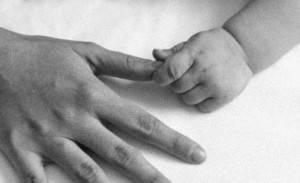 GABRIEL BITARIn 1998, in the fifth year of medical school, Maria Isabel Achatz attended a woman of 65 who had already had three cancers – one in the breast, the second in the peritoneum, the membrane that lines the abdomen, and the third in the other breast – and at that time she had another in her lung. “She said that the doctors had told her that one cancer had nothing to do with the other,” Maria Isabel relates. Intrigued, since it really was not a single tumor that had spread to other organs, she started following the thread of a rare syndrome, marked by the predisposition to cancer and expressed through successive and independent tumors at an early age – before age 30, and even in childhood.
GABRIEL BITARIn 1998, in the fifth year of medical school, Maria Isabel Achatz attended a woman of 65 who had already had three cancers – one in the breast, the second in the peritoneum, the membrane that lines the abdomen, and the third in the other breast – and at that time she had another in her lung. “She said that the doctors had told her that one cancer had nothing to do with the other,” Maria Isabel relates. Intrigued, since it really was not a single tumor that had spread to other organs, she started following the thread of a rare syndrome, marked by the predisposition to cancer and expressed through successive and independent tumors at an early age – before age 30, and even in childhood.
As other people started appearing with reports similar to those of that woman, Maria Isabel, in São Paulo, and soon after, other researchers in other states, concluded that this disease of genetic origin – the Li-Fraumeni syndrome, which increases the risk of developing cancer throughout people’s lives by 90% – although described as rare, was not uncommon in Brazil. If the frequency of this disease in the population is confirmed, serious public health problems might emerge, to the extent that public hospitals, at least in the immediate future, will hardly have the laboratories and staff needed to help people with this problem “In one year we found 28 families with cases very similar,” says the astonished doctor, who has been a researcher at the AC Camargo Cancer Hospital since 2001. Working together, the teams of Maria Isabel, Fernando Vargas, the National Cancer Institute (INCA) in Rio de Janeiro, Patricia Ashton-Prolla from the Federal University of Rio Grande do Sul (UFRGS) and Hospital de Clinicas Porto Alegre (HCPA), have so far identified 325 people from 132 families who suffer from the Li-Fraumeni syndrome. In no other country have so many patients with this disease appeared; so far it has been found in 560 families worldwide (the concept of family here, including uncles and cousins, not only parents and children).
Most people already diagnosed with this disease in Brazil are descendants of Portuguese immigrants and live in the states of Rio de Janeiro, São Paulo, Paraná, Santa Catarina and Rio Grande do Sul. But, as the residents of these states have been migrating to other regions for decades, those living in other regions may have this disease and never been diagnosed. One line of work in progress is examining this possibility, in the search for a precise delimitation of the geographic and population reach of this hereditary form of cancer.
The origin of this disease has already been defined. The succession of independent tumors that characterize the Li-Fraumeni syndrome result from alterations – or mutations – in the TP53 gene, located in chromosome 17. Each human cell contains two copies of this gene. A mutation that arises in one of the copies in the sexual cells (in the testes or ovaries) may be transmitted to the children, each with a 50% chance of inheriting the mutation. The TP53 gene triggers the production of DNA repair proteins, which every day suffer around 7000 incidents of damage resulting from solar radiation or attack by chemical agents. “When the gene is mutated,” says Patricia, “the repair mechanisms function in a deficient way and the cell becomes more prone to undergo malignant transformation.”
In 2006, Maria Isabel and Patricia Vargas’ teams, in collaboration with Pierre Hainaut’s group from the International Agency for Research on Cancer, presented the predominant mutation in people with Li-Fraumeni in Brazil. Called R337H, this alteration is found at one end of the gene, while in other countries other mutations responsible for the syndrome are in the central region of the gene.
Tracking down the gene
 GABRIEL BITARThe teams from São Paulo, Rio and Porto Alegre, together with colleagues from France and Italy, saw that cities with the greatest number of people with this mutation coincided with the places where the ‘muleteers’, Portuguese traders who traveled throughout the south and southeast in the 17th and 18th centuries, stopped off on their travels. The analysis of 29 strands of DNA from 12 unrelated persons with the mutation indicated that all these people had a common European ancestor, as detailed in “Human Mutation”, of February 2010. “It is a working hypothesis to be tested,” says Vargas. “We still haven’t investigated other regions in the country.” Maria Isabel adds: “We are open to new working collaborations that can help us define the geographic reach of this syndrome.” Another possibility is that the R337H mutation is not exclusively Brazilian, but has been under diagnosed in other countries. So far only two cases have emerged, a Portuguese person who lived in France and a Brazilian living in Canada.
GABRIEL BITARThe teams from São Paulo, Rio and Porto Alegre, together with colleagues from France and Italy, saw that cities with the greatest number of people with this mutation coincided with the places where the ‘muleteers’, Portuguese traders who traveled throughout the south and southeast in the 17th and 18th centuries, stopped off on their travels. The analysis of 29 strands of DNA from 12 unrelated persons with the mutation indicated that all these people had a common European ancestor, as detailed in “Human Mutation”, of February 2010. “It is a working hypothesis to be tested,” says Vargas. “We still haven’t investigated other regions in the country.” Maria Isabel adds: “We are open to new working collaborations that can help us define the geographic reach of this syndrome.” Another possibility is that the R337H mutation is not exclusively Brazilian, but has been under diagnosed in other countries. So far only two cases have emerged, a Portuguese person who lived in France and a Brazilian living in Canada.
The R337H mutation has proved to be very damaging: women who have it have a 97% risk – and men, a 73% risk – of developing cancer during their lifetime. While in the general population the risk of having a tumor before age 30 is 1%, in patients with this mutation it can be 50%. Described in 1969 by doctors Frederick Li and Joseph Fraumeni, this syndrome can manifest itself in infancy as tumors in the brain, in glands like the adrenal glands, in the blood (leukemia) or in the bones and soft tissue, like muscle. In adults, the most common tumors associated with this syndrome are in the breast, bowel, bones, central nervous system, lung, stomach, prostate and pancreas, or as leukemia.
The very high frequency of this mutation in the population surprised the researchers. In a group of 160,000 newly born infants who were tested in Curitiba, Parana, 455 – 1 in every 300 children – had the mutation that causes this syndrome in Brazil. “It’s a figure that’s much higher than that reported in literature,” says Vargas. In other countries, this syndrome affects 1 in every 5000 people. If confirmed by more extensive surveys, this result makes the syndrome the most common form of hereditary cancer, at least in Brazil. Of different origins, hereditary tumors of the breast, ovary, intestine, thyroid, prostate and skin among adults and of the retina in children, accounts for 5-10% of all cases of cancer. Vargas observes that the frequency – or prevalence – of this mutation in the population, if confirmed, might exceed that of other genetic disorders, such as congenital hypothyroidism, found in 1 in every group of 4000 people, phenylketonuria, found in 1 in every 10,000 newborn children, or one of the forms of dwarfism, which affects 1 in every 15,000 people.
Two women
This prevalence, even if it really is so high, may cause a serious public health problem: “People with this mutation, because they are at risk of different tumors at different ages, need to be monitored their whole lives, but at the moment we don’t have the public hospitals and teams prepared to deal with a problem of this magnitude,” says Patricia. Her team found the mutation in two women from a group of 750 without breast cancer, who had yearly mammograms. The two came from the same family, that until then had only had scattered cases of different types of cancer, not a clear history of hereditary cancer. The prospect of having cancer did not worry the two women, but within two years a tumor in the uterus manifested itself in one of them and other tumors were diagnosed in other people from the same family, including a child of four months old.
Patricia says that the parents of this 4-month old child went to the doctors because they did not understand why their daughter was gaining weight excessively, even though she was only getting breast milk. The problem was not a tendency to obesity, as they thought, but a tumor in the adrenal glands, causing a hormonal imbalance, the most visible result of which was excessive weight gain. The doctors removed the tumor and gradually the baby returned to normal weight. The hospital team asked other people from this same family, either with or without cancer, to do the genetic test, which identified the mutation in several of them. “At least in this family,” she says, “not all people who are born with the mutation develop cancer, which may be of different types and manifest itself also at different ages.”
This is an intriguing feature of this syndrome: why is it that a child with the mutation may develop an aggressive tumor and another person from the same family with the same mutation can get to 60 years old without having anything? One explanation is that the DNA of some people with this mutation may also harbor other genetic alterations, but this time are protective. One example if this is a duplication of 16 pairs of nitrogenated bases, units of DNA in the middle of another strand of the TP53 gene. Heading up this work, Virginie Marcel, from the International Agency for Research on Cancer in Lyon, France, in collaboration with teams from Sao Paulo and from the south of Brazil, found that in people in whom this strand was duplicated the first signs of cancer appeared almost 20 years later than in those in whom it was not duplicated. “There must be other genetic mechanisms that help protect people who carry this mutation,” says Maria Isabel.
There are still many other doubts. “What sets the tumors off? What kind of cancer is going to appear first? We don’t know. We don’t have all the answers,” observes Patricia. Currently she is coordinating a study to identify this mutation among 1500 women and 500 children who had tumors that were typical of this syndrome. The teams from the Hospital das Clinicas and the Children’s Cancer Institute in Porto Alegre have found that one in four of the first 150 children assessed had a family history of cancer. “Among children with adrenocortical carcinoma [in the adrenal gland], most have the R337H mutation,” she says. “There are isolated cases of children with the mutation who have had some type of cancer but there’s no family history of the disease. Their parents probably don’t know that other family members may carry the mutation and develop tumors.”
Return visits
 GABRIEL BITAR“We still don’t have any way of preventing the appearance of tumors, but we can make an early diagnosis,” says Maria Isabel. The doctors ask people with this mutation to come back to the hospital every 6 to 12 months to do the tests that detect tumors – all cancer can have a high degree of remission, or can even be cured when treated early. For women with this genetic alteration they ask for mammograms from age 25, not 50, as indicated for women without this mutation. “If we find a polyp we remove it immediately,” she says.
GABRIEL BITAR“We still don’t have any way of preventing the appearance of tumors, but we can make an early diagnosis,” says Maria Isabel. The doctors ask people with this mutation to come back to the hospital every 6 to 12 months to do the tests that detect tumors – all cancer can have a high degree of remission, or can even be cured when treated early. For women with this genetic alteration they ask for mammograms from age 25, not 50, as indicated for women without this mutation. “If we find a polyp we remove it immediately,” she says.
Sometimes, those who request the genetic testing do not have cancer, but are afraid of the disease that has marked the history of their family. “Many feel as if they have a sword hanging over their head, which may fall on them at anytime,” comments Vargas. Knowing that each cell in the body contains a genetic flaw with possibly tragic consequences can initially bring relief, because the fact that so many family members have had cancer is finally explaned. Over time, however, anxiety, fear, strength, weaknesses, desires, frustrations and doubts about their own life and family relations all come to the surface.
“Often, women, when they know they have the mutation, no longer know if they really want to have children, because they’re afraid of passing on this alteration, or whether they should marry or tell their husband, who sometimes leaves them when they know that they have this genetic predisposition,” says Christina Tarabay, a psychologist at the A.C. Camargo Cancer Hospital. “Those who have this mutation are sometimes afraid of being identified by their medical insurance, of telling their family or of losing control over their lives. Some people agree to do the genetic testing, but don’t want to know the result. We must respect the choices and decisions of people to whom we offer treatment, always.”
“The genetic test is a piece of paper with a huge symbolic significance that can profoundly change people’s lives, regardless of the result,” says Christina. She was surprised to see how 35 people from the same family, with an average age of 47, reacted to having had the genetic test a year earlier, and knowing they had the genetic alteration that could cause one cancer after another. “The 14 who knew they had the mutation adopted humor as a psychological defense mechanism, dealt with the problem openly and adhered to the medical and psychological help offered,” she says. “On the other hand, the other 21 suppressed any joy they might have felt at not having the mutation, sometimes felt guilty for not having the same defective gene as their siblings and became solicitous in order to make those family members with the mutation feel comfortable.”
Biologist José Roberto Goldim lives with this drama at the Hospital de Clinicas in Porto Alegre, where he heads the bioethics service. “We’re apparently going to give good news to someone without the mutation, and we see the person break down, because they feel that from that moment on they no longer belong to the family and that they’ve lost a characteristic that gives identity to the family. People in families with genetic diseases grew up seeing sick people and thinking that one day they’re going to get sick. The disease is part of the family heritage.” Every Monday afternoon, he said, his team meets up with Patricia and other doctors to establish what and when to tell those who did the genetic tests and their family members, avoiding a negative impact when communicating the diagnoses on the following days.
“Genetic testing changes the notion of privacy, because it goes beyond the individual himself/herself,” says Goldim. While the results of a blood test have only to do with those who had it, genetic test results may extend to the entire family and reveal unknown relatives, hidden marriages and cases of false paternity. “We have to be very careful and very discrete,” he recommends. “We cannot simply do the test, give the result and ask people to call their family. We have to think all the time how we can report the problems of one person to members of their family.”
Scientific articles
Achatz, M.I.W. et al. Highly prevalent TP53 mutation predisposing to many cancers in the Brazilian population: a case for newborn screening? Lancet Oncology. v. 10, n. 9, p. 920-5. set. 2010.
Palmero, E.I. et al. Tumor protein 53 mutations and inherited cancer: beyond Li-Fraumeni syndrome. Current opinion in oncology. v. 22, n. 1, p. 64-9.Jan. 2010.
